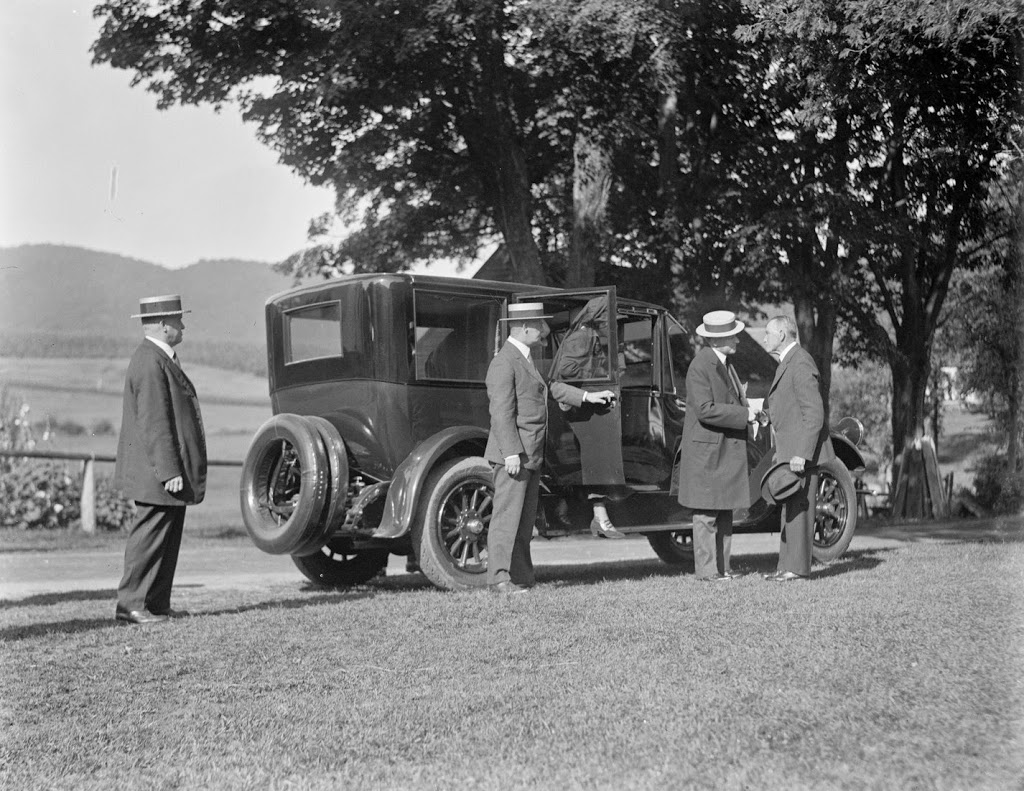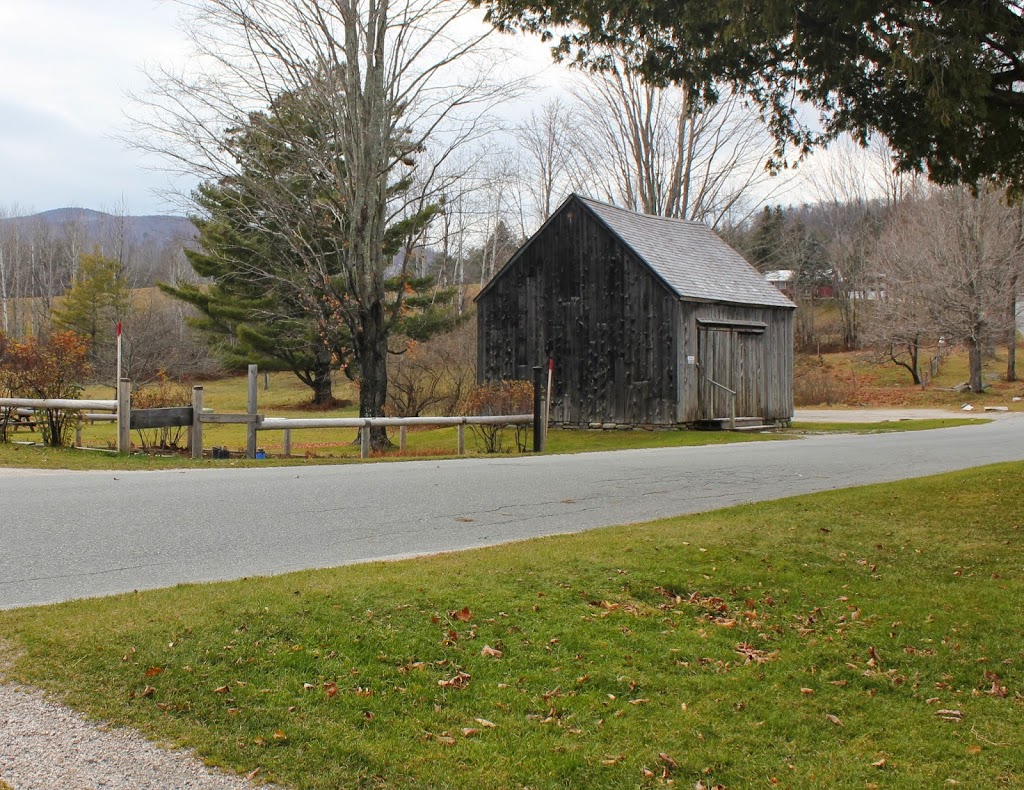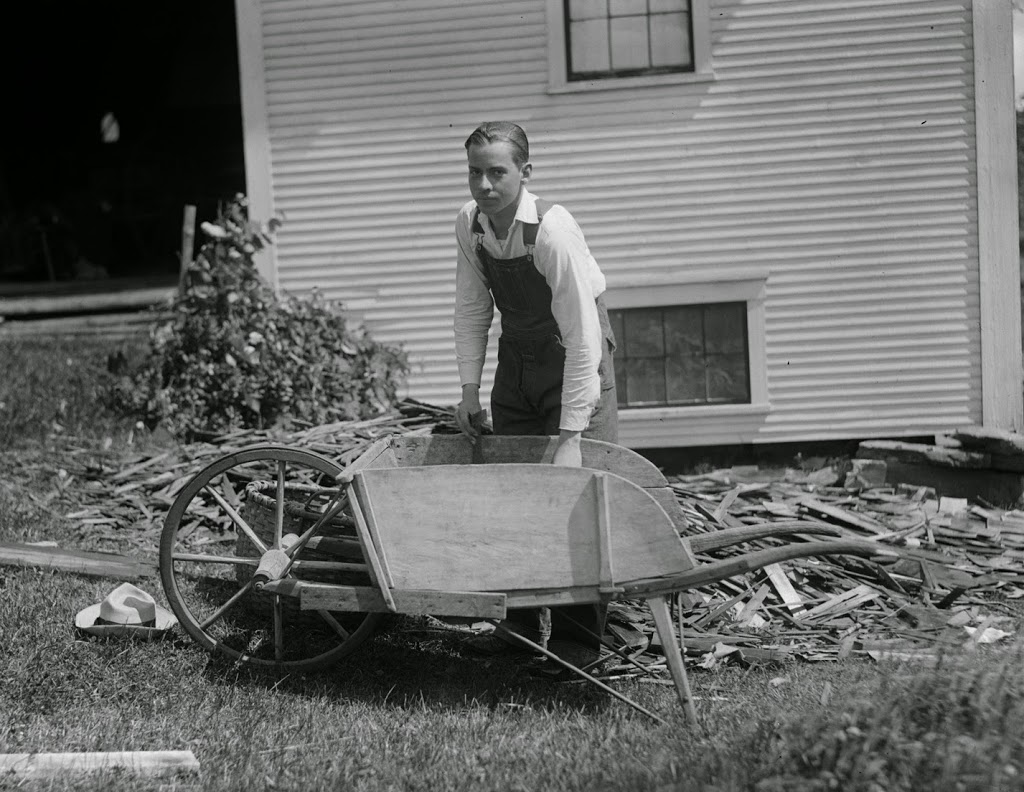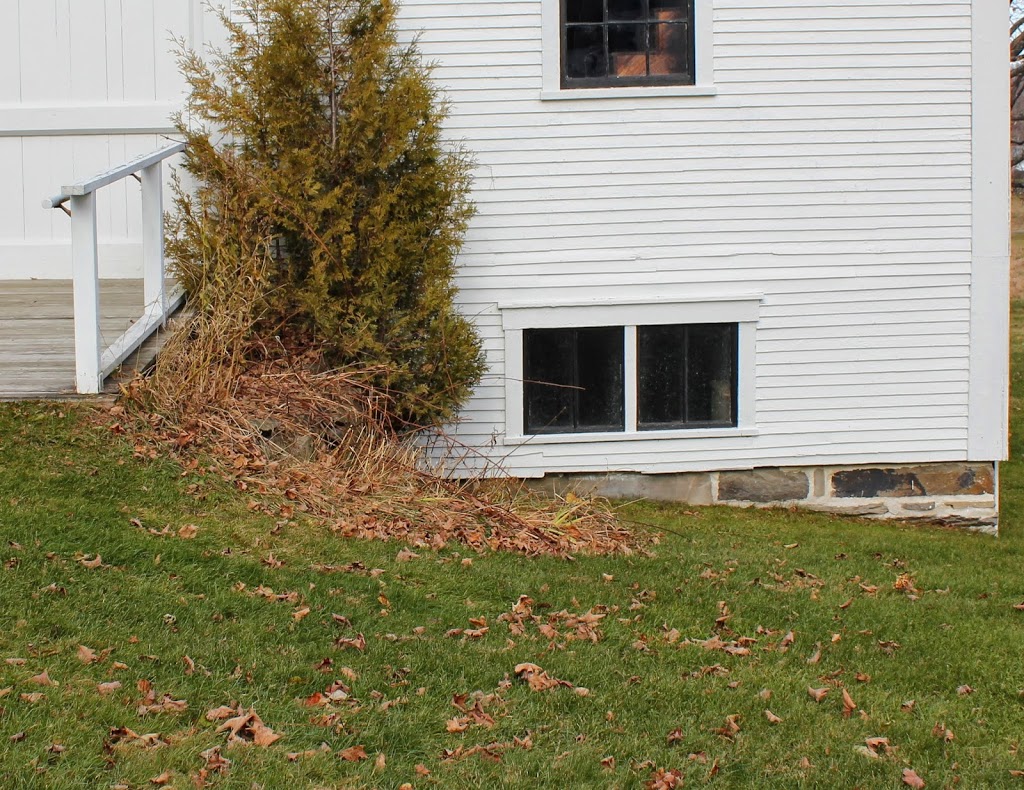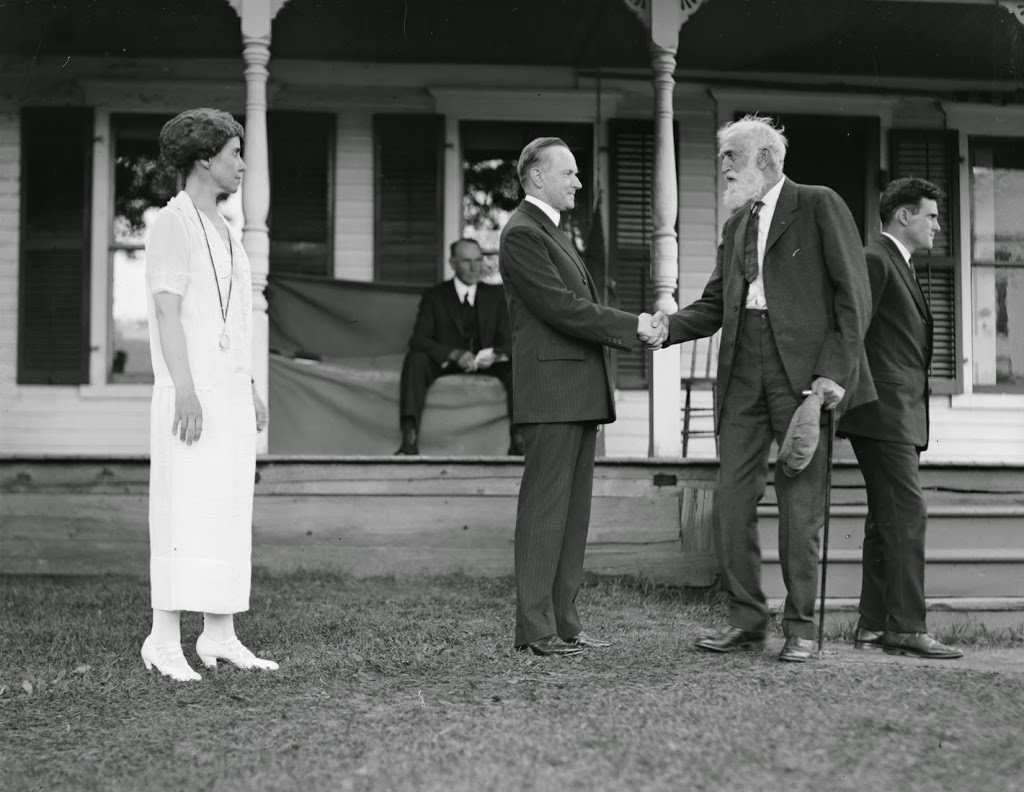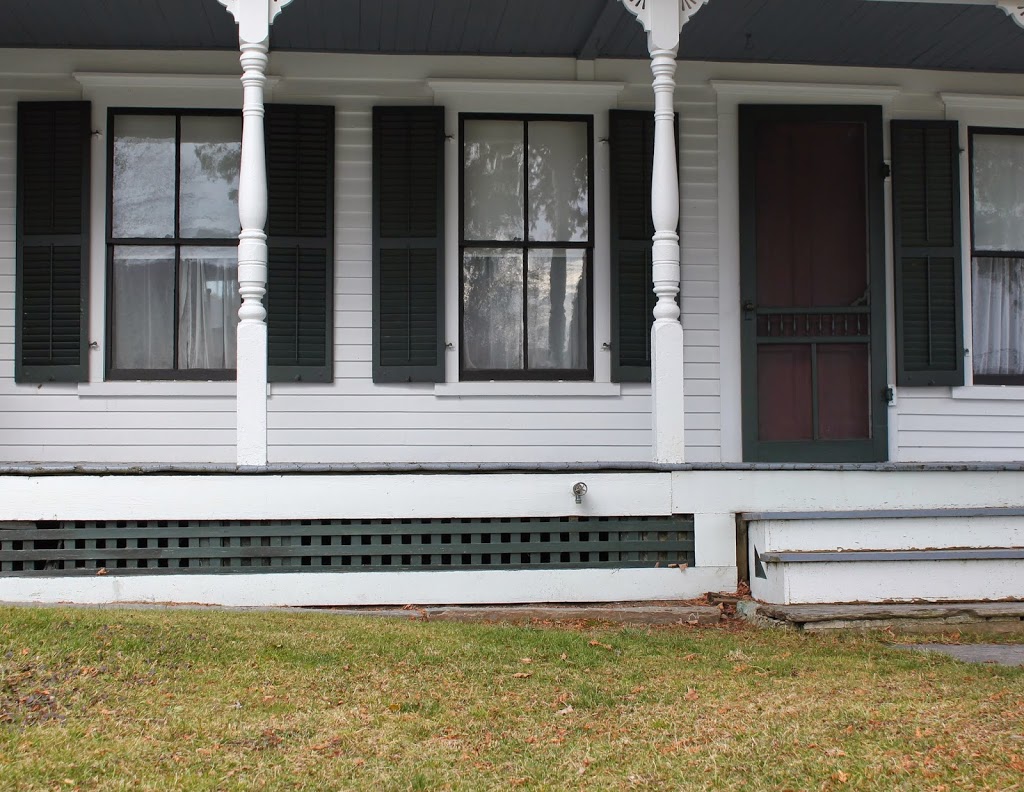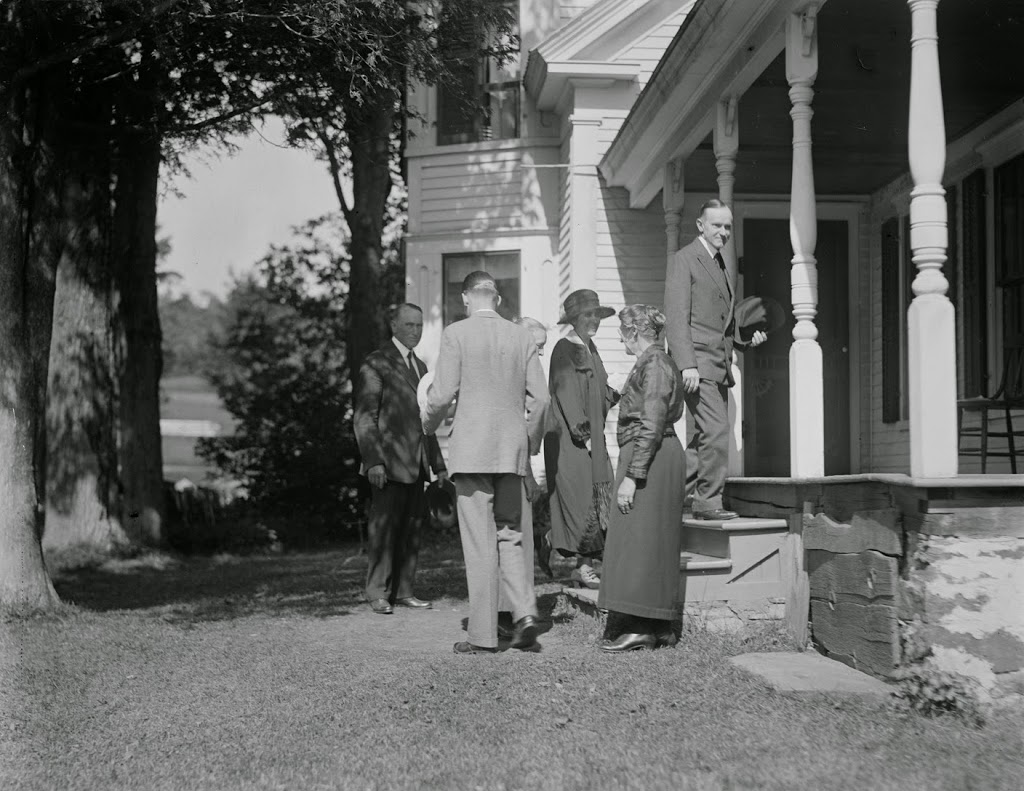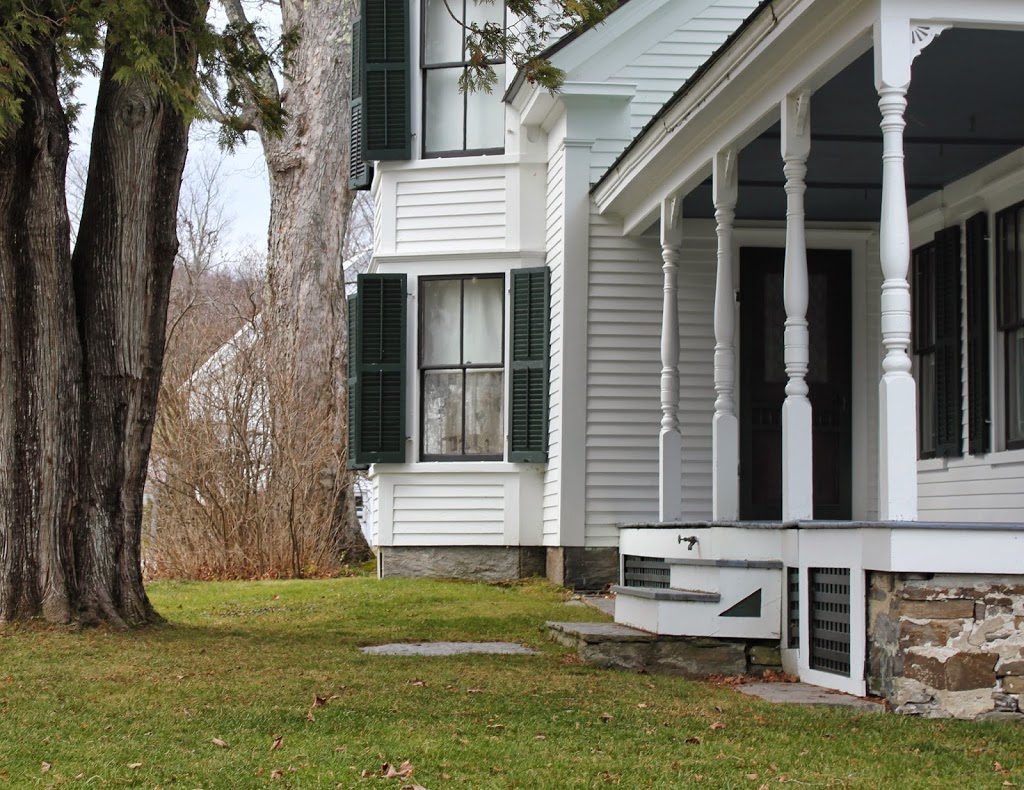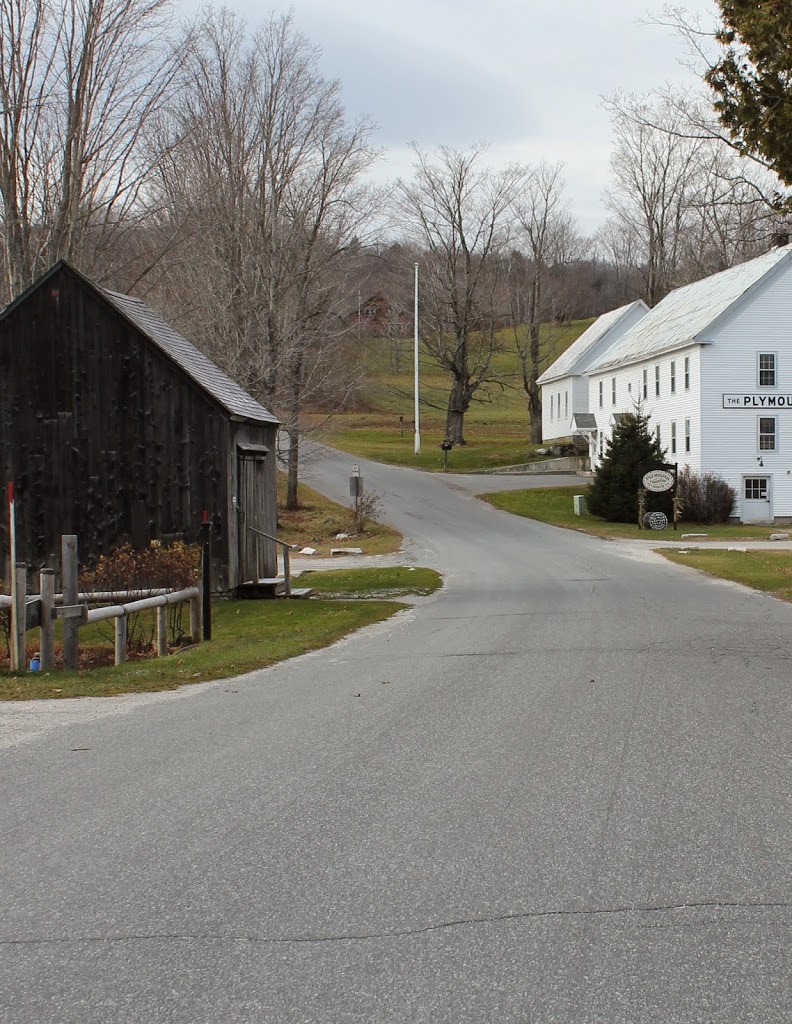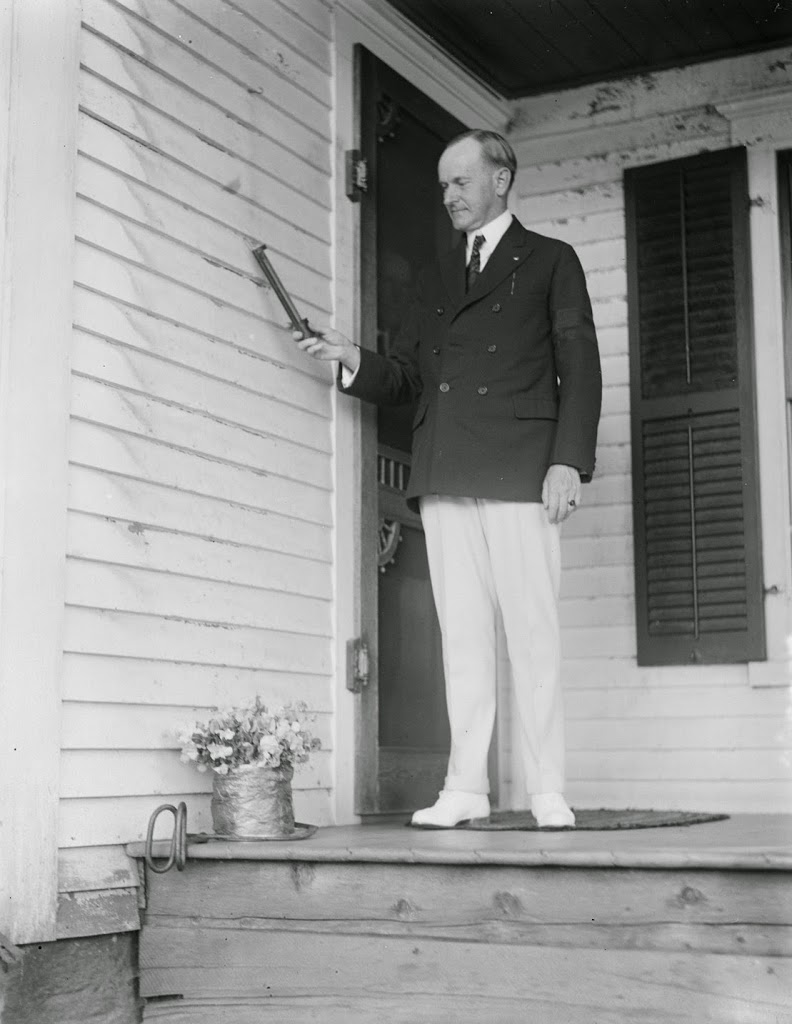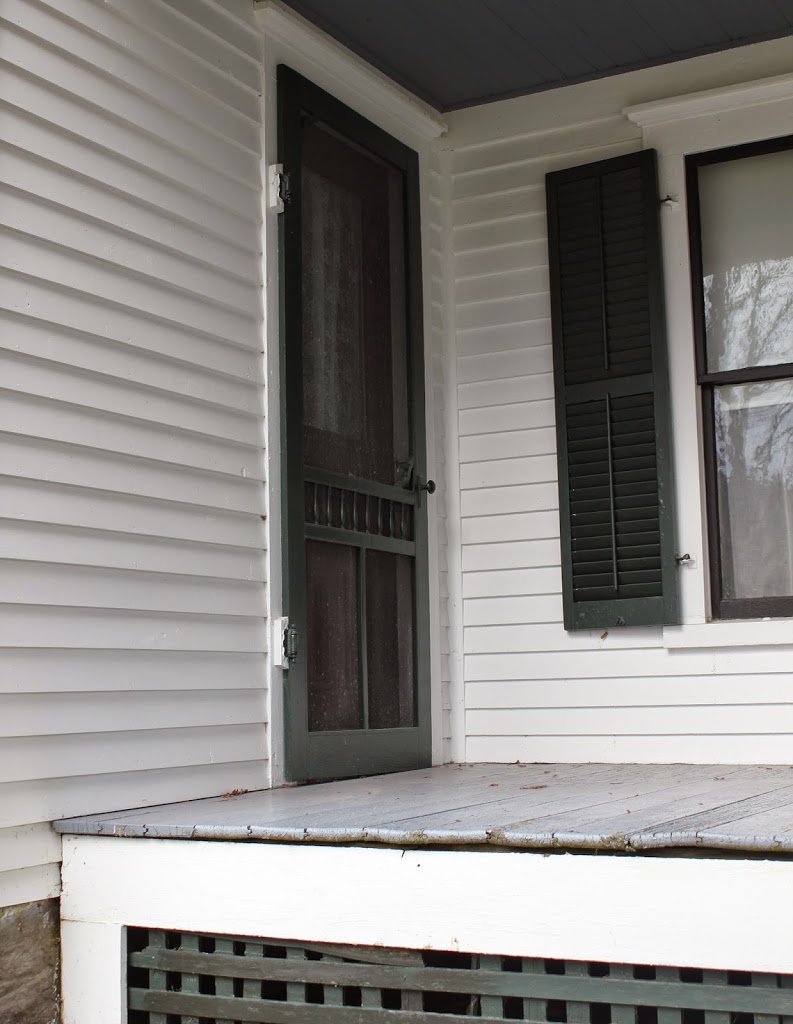President Calvin Coolidge greeting his father at his home in Plymouth, Vermont, in August 1924. Photo courtesy of Boston Public Library, Leslie Jones Collection.
The scene in 2014:
The first scene shows President Coolidge arriving at his father’s farm in Plymouth, Vermont, probably at the start of his August 1924 vacation. John Calvin Coolidge, Sr., his father, is the person furthest to the right, shaking hands with his son.
The elder Coolidge was 79 at the time, and he had worked as a farmer, teacher, and store owner over the years. He also served in the Vermont House of Representatives from 1872 to 1878, and in the Vermont Senate in 1910, during the same time that his son was the mayor of Northampton, Massachusetts. However, he is probably best known for administering the oath of office to his son, who as Vice President the previous year had been visiting his father when word came that President Harding had died. He remains the only non-judge to administer the oath of office to the president, although he was a notary public. Because of that, though, there was a concern about the legality of the oath, so Coolidge was sworn in again several weeks later by a federal judge.

